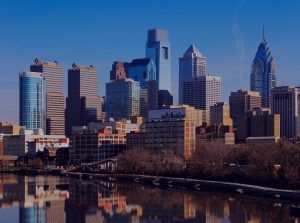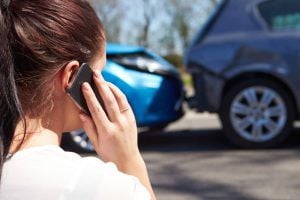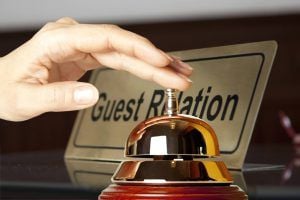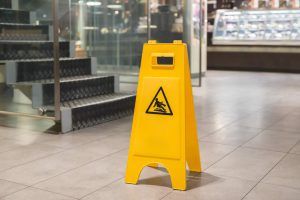Preventing Slip And Falls Benefits Everyone
We have all done it at some point in our lives, casually going about our business when some unexpected obstacle seems to just materialize right in our path, causing us to trip or slip and fall down. In many cases, it simply is embarrassing, particularly when an accidental fall happens in public. Shockingly, slip, trip and fall accidents are among the most deadly type of preventable accident worldwide.
The Statistics
The World Health Organization (WHO) reports that slips, trips and falls are the second most common cause of preventable death world wide, killing over 646,000 people annually. Slip and fall and trip and fall accidents do not just happen.
While it often seems like our own fault when we fall, and many of us do not want to blame someone else for our perceived carelessness, it is of paramount importance to realize that if one person encounters a situation that causes a fall, the likelihood another person will have an accident in the same situation is drastically more likely. Failing to report an accidental slip, trip or fall because of embarrassment or because no injury happened is extremely common.
Unfortunately, failing to report these accidents ends up leaving the danger for the next unsuspecting person. While one person may trip and fall and have no injury, another person might fall and break a hip or suffer a catastrophic head injury. It is up to all Americans to take proactive steps to reduce and eliminate hazards that result in accidental slip, trip and fall accidents. The statistics are sobering.
In the United States alone, more than 3 million adults over the age of 65 experienced a fall in 2017 according to data from the Center for Disease Control (CDC), and more than 9.2 million Americans visited emergency rooms because of slip, trip and fall accidents in 2016.
These accidents result in medical costs of approximately $50 billion annually, some 75 percent of which was covered under Medicare and Medicaid plans that pay at a substantially reduced rate. This creates increased pressure on our already stressed health care system, leading to higher health care costs and increased premiums for Americans who are required to carry insurance.
The Costs Of Slip And Fall Accidents
The true costs of slip trip and fall accidents can be devastating and life-altering. Slip, trip and fall accidents are totally preventable, yet the CDC finds numbers climbing in the US. At current pace, senior Americans will experience seven deadly falls every hour by the year 2030.
Solving the slip, trip and fall crisis will require action from government agencies, business owners and employees and an increased awareness of rights and responsibilities by all Americans.
The Department of Homeland Security popularized the slogan “See Something, Say Something” in response to terrorist attacks and threats in the United States, but the same slogan should be applied to slip, trip and fall accidents.
Often, a person will notice a potential hazard, a puddle of water on the floor at a grocery store for example, but rationally decide that it isn’t their problem, that management probably knows about it, and that they should carry on with their day rather than bother someone and waste their time.
Herein lies the root of the problem, though. Because while one person may recognize a hazard, another person might not, and unintentionally walk right into disaster. Prevention of slip and fall accidents can be as simple as telling a store clerk about a possible hazard or letting your neighbor know about a tree branch that is broken and ready to fall.
Don’t assume someone knows about the problem. Knowing what to look for is the first step to preventing accidents.
What Are The Most Common Causes Of Slip And Falls
Common slip, trip and fall accidents happen in a few places more often than others. Outside of workplace injuries suffered by employees covered by worker’s compensation insurance, around the home is the leading place Americans are injured in accidents resulting from trip and falls and slip and falls. The National Safety Council recommends these preventative steps around the home to reduce some of the most common causes of slip and fall and trip and fall accidents;
- Keep floors and surfaces clear of clutter
- Keep file cabinets and desk drawers closed
- Keep electrical and phone cords out of traffic areas
- Install handrails on stairways
- Wear sensible footwear
- Never stand on chairs, tables or any surface with wheels
- Properly arrange furniture to create open pathways
- Maintain good lighting indoors and out
Outside the home, keep landscaping trimmed, paying particular attention to weeds, brush and tree branches that extend over or into public walkways. Do not leave watering hoses haphazardly strewn about. Clean up piles of trash, debris and stored items that might cause someone to trip and fall.
Obvious Hazards That Are Overlooked
Hazards are often obvious, but might be overlooked. For example, a car being washed in a driveway may leave oil, grease and other slick liquids that present a slip, trip and fall obstacle and may expose the responsible party to expensive litigation. Inspect the sidewalks, driveways and walkways around your home for lifting sections, cracks and other signs of deterioration. According to the Pennsylvania State Association of Boroughs, which covers about 20 percent of all Pennsylvanians, repairs to the sidewalks are the responsibility of the homeowner.
Maintain Your Sidewalks
Pennsylvania law generally places responsibility of sidewalk maintenance on the adjacent homeowner or business owner. Generally, a government organization will notify property owners that a section of sidewalk is a nuisance in writing and provide a window of time for the repair to be completed. This is usually a six-month timeframe, unless it is determined that the repair is an emergency, in which case notice may be as short as 48 hours. In the event a homeowner or business fails to repair the damage, the state will make the repairs at the responsible parties expense, plus fines and fees.
Ice And Snow On Walkways
Snow and ice left to accumulate on sidewalks and walkways must be cleared. It is the homeowner or business owner responsibility to act quickly. Tens of thousands of slip trip and fall accidents happen each year after snowstorms when sidewalks are treacherous. While there is no standard for how long a responsible person or business has to clear the sidewalks, courts have determined that if the opportunity existed to clear the area and it did not happen, owners might be held responsible. Pennsylvania laws that relate to slip and fall and trip and fall accidents are unique, complex and nuanced. Understanding how the various laws and regulations can impact responsibility can be overwhelming.
Negligence In Slip And Falls
Knowing a few of the most important terms helps to understand how each piece of the puzzle fits together. The most common term used in slip, tip and fall accidents is ‘Negligence.’ Negligence refers to the unintentional, accidental or improper care for the safety of members of the public.
Negligence covers incidents resulting from situations such as pooling water on floors, torn or wrinkled carpets or mats in public walkways, broken tile, concrete and stairs and a broad variety of other situations that create a potential for injury.
Accidents that occur because a business or homeowner deliberately, intentionally or ignorantly refused to correct a known issue can result in a more severe charge of ‘Gross Negligence.’ Gross negligence charges typically result from injuries that occur after a responsible person has been notified about a problem that did not get repaired or corrected in a timely manner.
Examples can include grease, oil and slippery substances that are not cleaned up after a clean-up notice was delivered, broken pavement and walkways that have been cited as needing repair, dangerous stairways, dead and falling trees and dozens of other potential hazards can expose individuals and businesses to gross negligence charges.
The key here is that these are potential hazards that are obvious to the average person, but ignored. The most curious wrinkle in personal injury law in Pennsylvania is called ‘Comparative Negligence.’ This standard is used by the courts to determine the amount of responsibility an injured person has to avoid injury and illuminates a few steps individuals and businesses can take to help protect themselves from lawsuits. Courts have found that persons who are injured due to their own fault will not be able to recover damages resulting from injuries.
Not All Slip And Fall Accidents Are A Result Of Negligence By The Premises Owner
Examples of situations courts have found the injured person to be liable for their injuries can include dangerous stairwells, walkways and pathways which the responsible party has called attention to hazards using signage, verbal warnings and other cues to indicate potential harm.
Persons who enter these areas are considered to be acting on their own interests and acknowledge the danger by proceeding. Be warned, signs indicating hazards are not always enough, and in some instances, courts may rule that despite signage and warning, responsible parties still owe a duty of care to protect the public.
Under the comparative negligence standard, if the court determines the injury was more than 50 percent the responsibility of the injured person, no damages will be awarded. Similarly, if the injury is less than 50 percent the injured persons fault, but they bear some responsibility, the courts will reduce damages appropriately. Property owners can reduce potential liability by warning people of potential hazards.
By doing so, the chance a court will find a property owner 100 percent responsible are greatly reduced. Post signage indicating potential dangers, like loose gravel or paving stones, dangerous hose fittings that sit low to the ground and might be tripped over, and point to less than obvious problems.
Keeping ones property clean of refuse and debris is an easy first step to accident-proofing property. Clearing dead trees and branches and keeping grass and landscaping short and well kept helps to eliminate the possibility of tripping hazards.
Many Trip And Fall Accidents Occur Around Areas That Are Under Construction Or Are In The Process Of Being Repaired.
Property owners can help alleviate responsibility with specific notifications. If openings in the ceiling and floor are to be left open while members of the public are present, blockade the area as much as possible and post signage that calls attention to the situation.
Do not leave ladders, work tables, tools, electrical cords and the like unattended. If work must be done during times when the public is present, attempt to prevent access to the dangerous areas as much as possible. Nationwide Insurance offers the following guidelines to U.S. business owners to help safeguard against allowing an accident to happen:
Conduct a daily safety survey to look for common culprits such as wet or greasy floors, loose mats, torn carpeting, bad lighting, clutter, cables or wires, and uneven floors.
Immediately attend to any problems by putting up warning signs and taking steps to quickly eliminate the hazard.
Maintain all floors and walkways on a consistent basis, using the recommended cleaning products and methods. Fix all uneven surfaces if possible by recoating or leveling the floor, or illuminate (or otherwise identify) areas that can’t easily be leveled.
Train your employees in slip and fall safety, and establish guidelines on how employees should report problems and respond to customer injuries or hazardous situations. Install secure handrails near all stairs and balconies.
Take care of your outdoor areas, including sidewalks and parking lots. Potholes, snow and ice all create potential problems. If necessary, subcontract snow and ice removal to make sure it’s handled promptly.
Document all of your efforts by keeping records of your daily safety inspections, maintenance work and how you dealt with any slip and fall accidents.
Accidents On Stairs
Stairs are one of the most dangerous situations to encounter, particularly for older residents who are mobility-challenged and prone to trip and fall accidents. Pennsylvania regulates the construction and maintenance of stairwells in both residential and commercial property. The courts have determined that stairwells that are dilapidated or otherwise dangerous constitute negligence on the property owners behalf. In most cases, even signage warning users of dangers will not be sufficient to protect against trip and fall accidents on poorly maintained stairs.
Property owners should take extra precaution when ensuring stairwells are safe. Provide the best quality lighting possible, so that each step is clearly visible. use high visibility markings to indicate the top and bottom of stairs. Securely anchor handrails and ensure they remain well fastened at all times. If the stairs are constructed of a potentially slick material, such as tile or wood, use traction strips at the leading edge of each step. If the steps are carpeted, make sure the covering is securely held down and does not bunch or pile. Use signage when possible to alert users to the potential dangers of falling.
A common cause of trip and fall accidents involving stairs results from wooden steps nailed or screwed in place on the exterior features of a property, such as leading to a deck or patio. Loose, broken and improperly spaced steps are a liability. Knowing how to protect yourself from expensive slip, trip and fall cases is an important step toward reducing the number of accidents that occur each year.
Knowing how to protect yourself also informs you on what to be aware of in public and helps guide you to avoid dangerous situations that can lead to severe injury and death. It is likely that someone you or someone you care about will be injured in a slip and fall or trip and fall accident at some point in life. There are a few things to remember when this happens to you.
If you are severely injured, have struck your head, or have buzzing, numbness or lack of motion, do not move. If possible, ask someone to call emergency services.
If you are able to move to a safe location, do so. Try to stay out of walkways, roads and pathways to avoid causing additional injuries to others and to provide easy pathways for emergency first responders.
If possible, take photographs of the area, clearly showing what you believe caused the accident. Take pictures of any signage, barricades or other objects that might have been placed to prevent your accident.
If witnesses saw you fall, ask them to provide contact information for future contact. They may have seen or heard something you did not that could be beneficial to your case.
If you are injured at a business, ask for the owner’s contact information, including name, phone number and/or email address and best time to contact.
Do not accept any offers of good will intended to prevent you from filing a claim.
The most important thing to do is to contact the experienced personal injury attorneys at Philly Injury Lawyer.
In our decades of legal practice, we have fought on behalf of thousands of injured clients and ensured they were compensated for the suffering incurred as a result of negligent property owners and businesses. Our attorneys understand how the courts rule on slip, trip and fall cases, and we are experts at ensuring you get the appropriate medical care and legal remedy.





